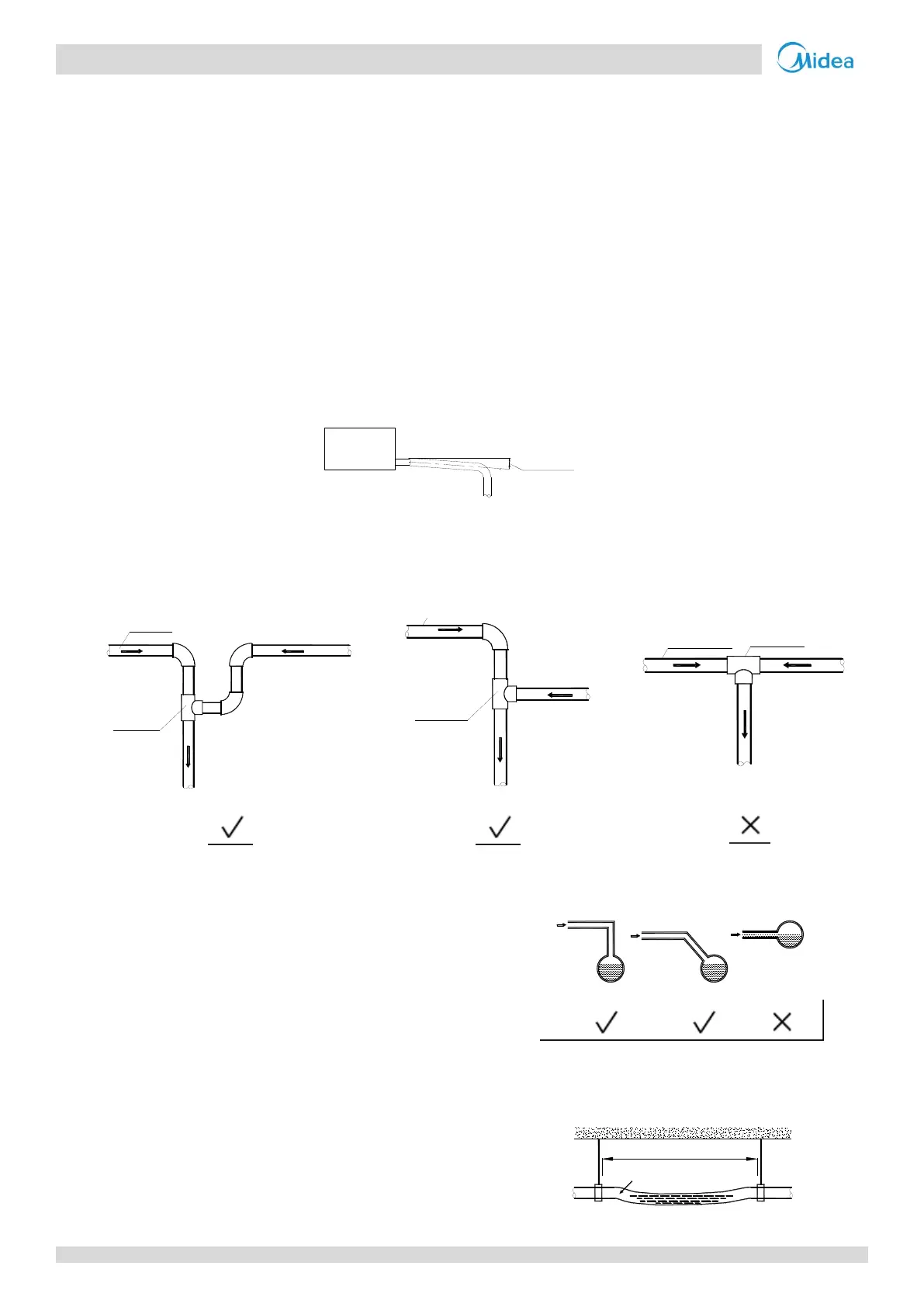VC Pro VRF 50/60Hz
174
Midea VC Pro Series Engineering Data Book
6 Drain Piping
6.1 Design Considerations
Drain piping design should take account of the following considerations:
Indoor unit condensate drain piping needs to be of sufficient diameter to carry the volume of condensate produced at
the indoor units and installed at a slope sufficient to allow drainage. Discharge as close as possible to the indoor units
is usually preferable.
To prevent the drain piping becoming excessively long, consideration should be given to installing multiple drain piping
systems, with each system having its own drainage point and providing drainage for a subset of the overall set of indoor
units.
The routing of drain piping should take into consideration the need to maintain sufficient slope for drainage whilst
avoiding obstacles such as beams and ducting. The drain piping slope should be at least 1:100 away from indoor units.
Refer to Figure 3-6.1.
Figure 3-6.1: Drain piping minimum slope requirement
To avoid backflow and other potential complications, two horizontal drain pipes should not meet at the same level.
Refer to the Figure 3-6.2 for suitable connection arrangements. Such arrangements also allow the slope of the two
horizontal pipes to be selected independently.
Figure 3-6.2: Drain piping joints – correct and incorrect configurations
Branch drain piping should join main drain piping from the
top, as shown in Figure 3-6.3.
Recommended support/hanger spacing is 0.8 – 1.0m for
horizontal piping and 1.5 – 2.0m for vertical piping. Each
vertical section should be fitted with at least two supports.
For horizontal piping, spacing greater than those
recommended leads to sagging and deformation of the pipe
profile at the supports which impedes water flow and should
therefore be avoided.
Air vents should be fitted at the highest point of each drain
piping system to ensure that condensation is discharged
smoothly. U-bends or elbow joints should be used such that
the vents face downwards, to prevent dust entering the
piping. Refer to Figure 3-6.5. Air vents should not be
installed too close to indoor unit lift pumps.
Figure 3-6.3: Branch drain piping joining main drain piping
Figure 3-6.4: Effect of insufficient drain piping support
